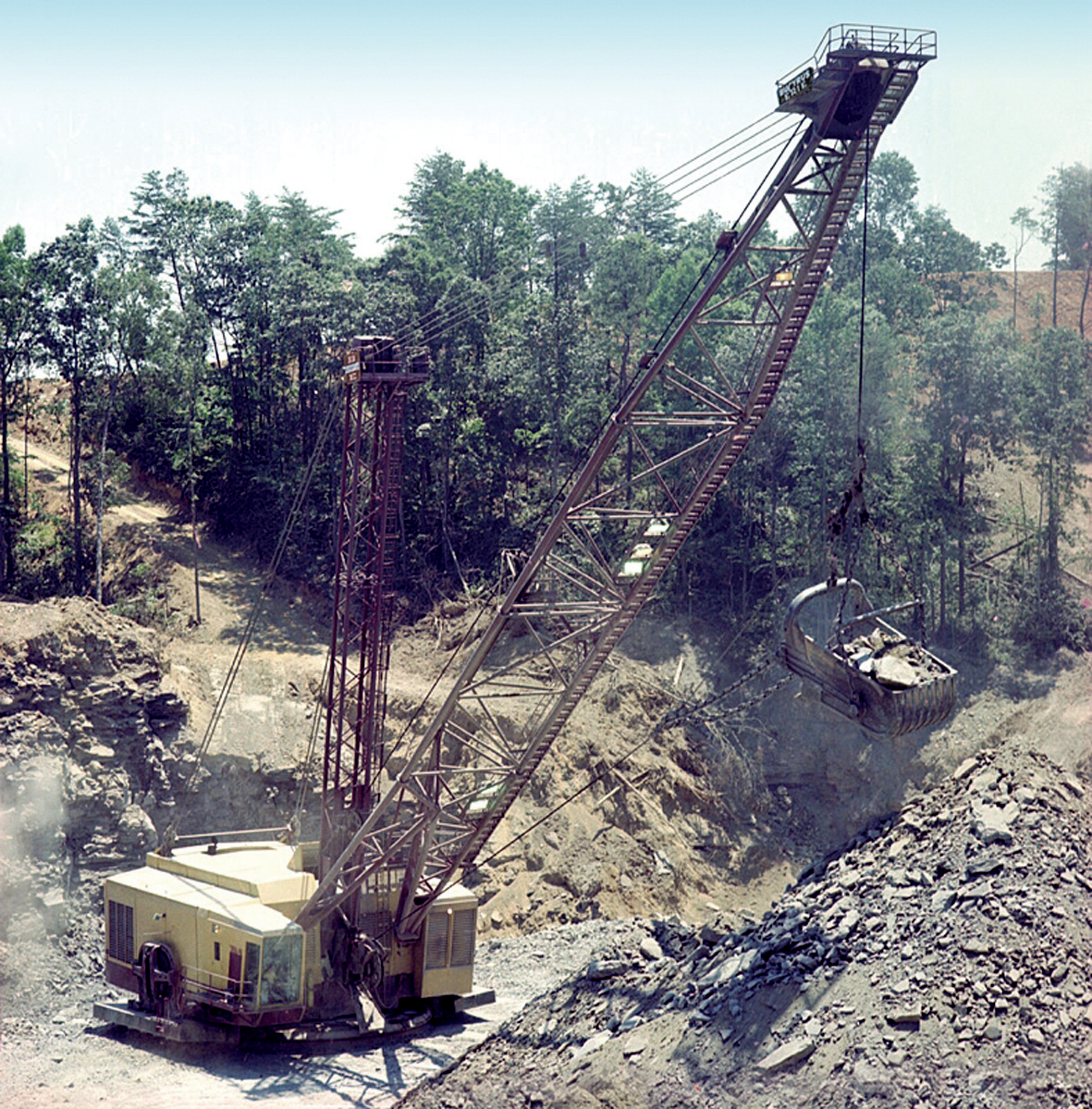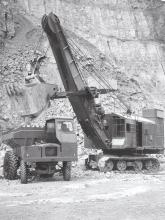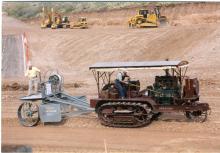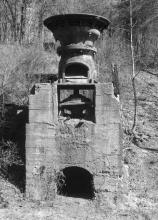
Dragline mobility For removing overburden and opening up a new area of an extraction operation, the dragline is one of the most efficient tools available. Mike Woof reviews their development
Draglines date back to the start of mechanised earthmoving with the first steam-powered machines appearing at the start of the 20th century. They have been used successfully in quarrying operations since they first emerged onto the market and larger machines are still used in some applications.
The first dragline was a flimsy affair made largely of wood and was designed and built by John Page in 1904. This machine was also limited in its capabilities as it was unable to move under its own power. As draglines developed further they grew larger and more efficient and some units could run on railroad tracks, giving them a degree of mobility.
The first major improvements in terms of versatility came in 1913 with the development of the first 'walking' machine by US firm Monighan. The system was crude but by 1925 Monighan had developed an eccentrically-mounted cam system that turned in an oval track and moved the shoes in a circular motion. This design is still seen on some current draglines from Bucyrus, which merged with Monighan in the 1930s.
Draglines became progressively larger and more powerful, having switched from steam power to electric and in some instances, diesel drive. Crawler mounted draglines were also developed, although these tended to be at the smaller end of the market and used crawler crane technology.
While dragline development continued at the top end of the market with large walking machines aimed at mining operations and for crane-derived, crawler mounted units for sand and gravel extraction in particular, the market for mid-sized draglines began to decline.
However in the 1970s
These modular draglines were also offered with a choice of diesel or electric drive and following the lead set by Bucyrus-Erie a number of other models came onto the market, such as Marion's 7450 and Rapier's W700.
Interest was healthy rather than strong for these machines. Bucyrus-Erie built 18 of the 380-Ws between 1978 and 1985 and these were fitted with buckets of 7.85-12.5m3. Meanwhile in the UK six of the 380-W draglines were built at the Ruston Bucyrus plant between 1979 and 1985, and these were equipped with buckets of 7.85-9.4m3. One of these UK built 380-Ws is still in regular use at the Blue Circle quarry near Dunbar in Scotland.
The Bucyrus-Erie 680-W was the biggest machine to feature the modular layout and was also the first dragline Bucyrus-Erie designed on a computer using early CAD systems. Between 1982 and 1988, five 680-Ws were manufactured by Bucyrus-Erie and these were fitted with buckets of 26.7-31.4m3. Of the competing machines seven Marion 7450s and five Rapier W700s were built.
Although Bucyrus-Erie had plans to build larger draglines using this modular concept, a worldwide recession triggered a collapse in demand for construction and extraction machines of all types in the early 1980s and the idea was shelved.
There is still a market for larger conventionally built draglines but these tend to be custom built for specific projects, while smaller crane-derived machines are widely used in sand and gravel quarrying










